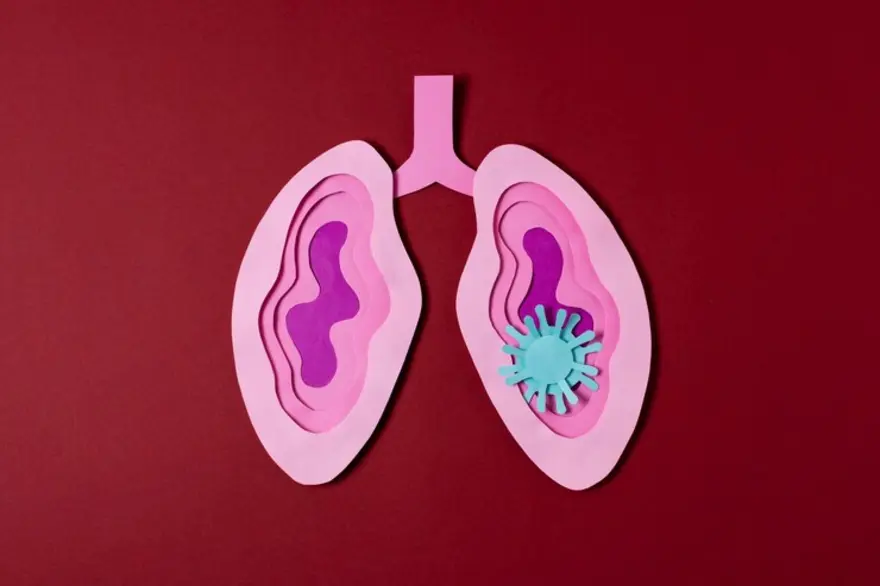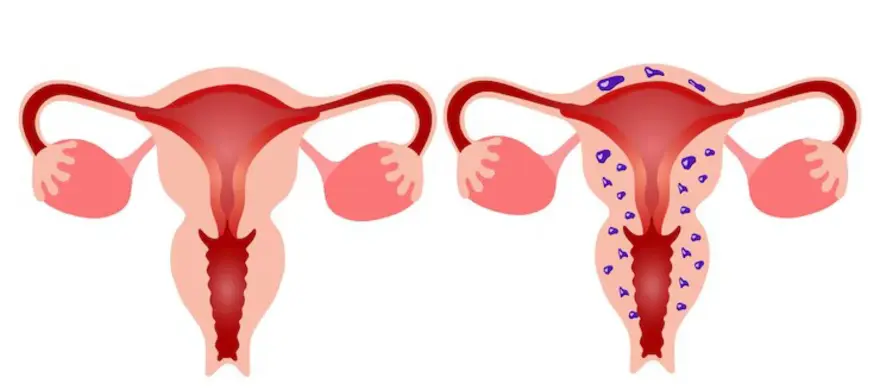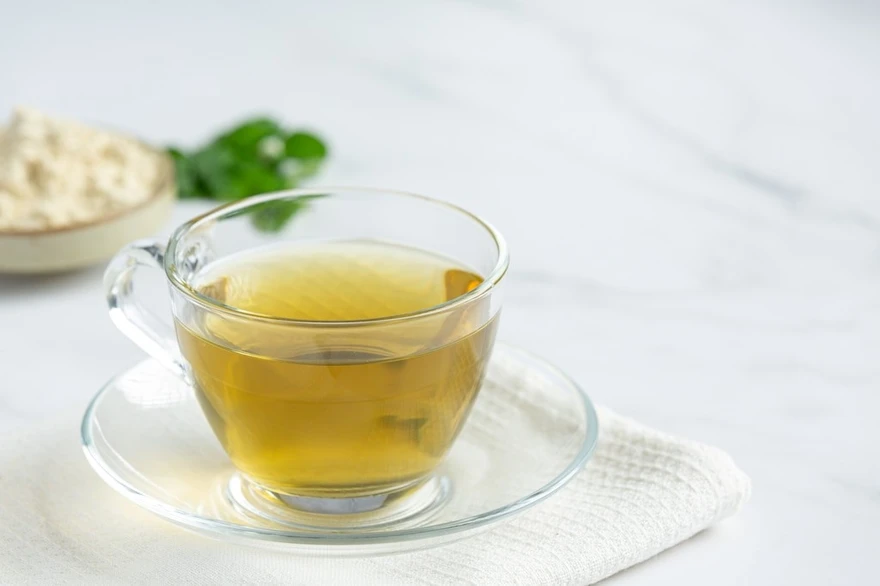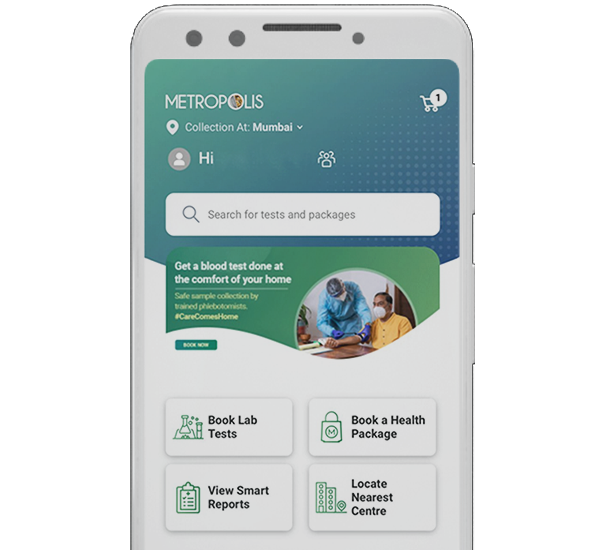Latest Blogs
Analyzing Hodgkin Lymphoma: Symptoms and Treatment Pathways
Introduction Hodgkin lymphoma is a type of cancer that affects the lymphatic system. Although a diagnosis can be concerning, it is important to remember that significant advances have been made in the treatment of Hodgkin's lymphoma and many patients have achieved long-term remission. This guide is intended to provide you with knowledge about the disease, including its signs and symptoms, diagnostic procedures, and available treatment options. Understanding Hodgkin lymphoma helps you to actively participate in your healthcare decisions. This resource also provides a comprehensive overview of the disease in a clear and informative manner. What Is Hodgkin Lymphoma? Hodgkin's lymphoma, formerly also called Hodgkin's disease, is a form of cancer classified as a monoclonal lymphoid neoplasm. This means that it comes from a single clone of mutated lymphocytes (white blood cells) in the lymphatic system. What distinguishes it from other lymphomas is the presence of specific abnormal cells called Reed-Sternberg cells. The Hodgkin lymphoma survival rate is about 90% for five years or more after diagnosis. Hodgkin lymphoma types Hodgkin lymphoma types are primarily divided into Classical Hodgkin lymphoma and Nodular Lymphocyte-Predominant Hodgkin lymphoma. Classical Hodgkin Lymphoma (cHL): This Hodgkin lymphoma type accounts for the majority of cases and includes subpopulations such as tuberous sclerosis (NSHL), lymphocyte-rich, mixed cellularity, and lymphocyte-depleted. Nodular Lymphocyte-Predominant Hodgkin Lymphoma (NLPHL): NLPHL is less common and is characterized by the presence of predominantly lymphocytic cells, which are different from the Reed-Sternberg cells found in cHL. What Are Hodgkin Lymphoma Symptoms? Hodgkin lymphoma symptoms include: Painless Swelling of Lymph Nodes: Hodgkin lymphoma is commonly present with a painless enlargement of the lymph nodes, notably in the neck, armpits, or groin. This swelling may persist over time and could be an initially noticeable symptom. Persistent Fatigue: Patients with Hodgkin lymphoma often experience a persistent fatigue, which may not be alleviated by rest. This fatigue can significantly affect daily activities and may worsen as the disease progresses. Fever: Fever is a common symptom of Hodgkin lymphoma and is often intermittent. It may be accompanied by other symptoms such as night sweats. Night sweats: In Hodgkin lymphoma, night sweats often cause severe bedwetting. They can occur regularly and disturb sleep patterns. Unintended Weight Loss: Unexplained weight loss is an important symptom of Hodgkin lymphoma. Patients may experience noticeable weight loss even if they are maintaining a regular diet and eating habits. Loss of Appetite: Hodgkin lymphoma can lead to a decreased appetite, contributing to unintentional weight loss. Patients may find it difficult to eat, leading to further nutritional deficits. What Causes Hodgkin’s Lymphoma? Hodgkin lymphoma causes are unknown, but it is thought to be related to abnormalities in lymphocytes, a type of white blood cell. Risk factors, includes a weakened immune system, a family history of lymphoma, and exposure to certain infections (such as Epstein-Barr virus) are other possible Hodgkin lymphoma causes. Certain Hodgkin lymphoma types may have unique associations, such as nodular sclerosing Hodgkin lymphoma, which is more common in young people, and mixed cell Hodgkin lymphoma, which has a strong association with Epstein-Barr virus infection. How To Diagnose Hodgkin Lymphoma? Hodgkin lymphoma diagnosis includes: Physical Examination: Doctors conduct a thorough physical exam, checking for swollen lymph nodes, which could be a sign of Hodgkin lymphoma. Blood Tests: These tests help evaluate overall health and may detect certain markers associated with Hodgkin lymphoma. Imaging Tests: X-rays, CT scans, MRI scans, and PET scans provide detailed images to identify abnormalities in the lymph nodes and other parts of the body. Biopsy: A tissue sample from an enlarged lymph node or other affected area is examined under a microscope to confirm the presence of Hodgkin lymphoma. What Are The Stages Of Hodgkin Lymphoma? Stages of Hodgkin lymphoma include: Stage I: Cancer is found in one lymph node region or organ. Stage II: Cancer is found in two or more lymph node regions on the same side of the diaphragm, or it may be found in one part of a tissue or organ and the lymph nodes near that organ. Stage III: Cancer is found in lymph node regions on both sides of the diaphragm. It may also be found in one part of a tissue or organ and nearby lymph nodes on both sides of the diaphragm. Stage IV: Cancer has spread widely into one or more organs outside the lymph system or into organs not near the lymph system. How Is Hodgkin Lymphoma Treated? Hodgkin lymphoma treatment includes: Chemotherapy: This treatment involves the use of drugs to kill cancer cells. It is often used alone or in combination with other therapies as the primary treatment for Hodgkin lymphoma. Radiotherapy: Radiotherapy uses high energy rays to target and destroy cancer cells. It can be used alone or in combination with chemotherapy, especially for diseases in the early stages or as a consolidation therapy after chemotherapy. Bone marrow transplant: In the case of Hodgkin recurrence or intractable lymphoma, the bone marrow transplant can be considered. This procedure includes replacing the bone marrow with a healthy stem cell. Other Drug Therapy: In some cases, targeted therapies, such as monoclonal antibodies and immunotherapy, can be used to specifically target cancer cells or boost the body's immune response to cancer. What Is The Outlook For Hodgkin Lymphomas? The outlook for Hodgkin lymphomas is as follows: Excellent Prognosis: Hodgkin lymphoma generally has a favorable Prognosis, with high survival rates. For example, the 5 -year survival rate for classic Hodgkin's lymphoma at the early stages is greater than 90%, which indicates a very high healing rate. High Survival Rate: Hodgkin lymphoma has about 90 % of the five -year survival rate. This means that about 90 of the 100 people diagnosed with Hodgkin lymphoma will survive for at least 5 years after diagnosis. Stage-Dependent: Survival rates vary depending on the stage of the disease. For example, the 5-year survival rate for stage 3 Hodgkin lymphoma is approximately 80%. Improved Treatments: Advances in Hodgkin lymphoma treatment, including chemotherapy, radiation therapy, and targeted therapy, have contributed to the improvement of patients with Hodgkin lymphoma. Conclusion In conclusion, understanding Hodgkin's lymphoma symptoms and treatment options for is essential for patients and their families facing this diagnosis. From painless swollen lymph nodes to persistent fatigue, early recognition of these signs allows for timely intervention and results in better outcomes. Treatment options, including chemotherapy, radiation therapy, and targeted therapies, offer hope and a path toward remission. However, timely diagnosis and access to accurate diagnostic services are essential components of this journey. Metropolis Labs, with its commitment to providing accurate blood testing and health check-up services, stands as a reliable partner in this fight against Hodgkin lymphoma. Through a network of diagnostic labs and qualified blood collection technicians, Metropolis ensures precise testing and prompt delivery of reports via email and their user-friendly TruHealth app. Trust Metropolis Labs for accurate pathology services and support in your healthcare journey.
Managing Diverticulitis: Dietary Strategies and Lifestyle Tips for Relief!
Introduction Diverticulitis can be challenging, but with the right nutritional strategies and lifestyle adjustments, you can effectively manage your symptoms and improve your quality of life. In this article, we'll explore the ins and outs of diverticulitis, from understanding its symptoms and causes to discussing different treatment options. Whether you are newly diagnosed or looking for ways to better manage your condition, this article aims to provide you with the knowledge you need. What is Diverticulitis? Diverticulitis is a condition in which the small pouches called diverticula present in the wall of the colon (large intestine) in the digestive system become inflamed or infected. Diverticulitis causes symptoms such as abdominal pain, fever, and intestinal changes. What are the Different Types of Diverticulitis? Diverticulitis types can be categorized as follows: Acute diverticulitis occurs suddenly but resolves quickly with treatment. Chronic inflammation can occur several times. This may happen because one of your episodes has not completely healed. Or it may be due to another chronic colon disease. Chronic diverticulitis may develop due to a previous episode you had hasn't healed completely, or it may be due to another chronic colon disease. Uncomplicated diverticulitis this is the most common type of diverticulitis. It easily gets better with the right treatment. Complicated diverticulitis may involve complications such as abscess formation, perforation, or fistula formation. What are the Symptoms of Diverticulitis? Diverticulitis is more common in women aged 50 years and above compared to men. However, there are no separate diverticulitis symptoms in females. Diverticulitis symptoms can vary from person to person but commonly include: Abdominal pain, particularly in the lower left side Fever Nausea Vomiting Changes in bowel habits Abdominal tenderness or bloating What are the Causes of Diverticulitis? Diverticulitis occur when pouches of tissue form along the digestive tract, typically in the large intestine or colon. These pouches (diverticula) can become inflamed or infected when their openings become blocked by faeces or partially digested food. However, there is no exact single reason that can be termed as diverticulitis causes, it is believed to be related to factors such as: Age: Due to aging, your muscles and tissues naturally weaken, making your colon more prone to developing diverticula. Genetics: Genetic factors may be one of the diverticulitis causes. You can inherit diverticulitis from your family members. Diet: Your dietary choices can be the hidden reason behind diverticulitis causes, particularly a low-fibre diet, can contribute to the development of diverticulitis by causing constipation and increasing pressure in your colon. Lifestyle: Factors such as obesity, smoking, and lack of physical activity can increase your risk of diverticulitis. Obesity: Excessive body weight, particularly around your abdomen, can increase a pressure on your abdominal cavity, leading to the formation of diverticula. Smoking: Smoking is associated with an increased risk of diverticulitis, it can be possibly due to its effects on colon motility and inflammation. Lack of Physical Activity: Your sedentary lifestyle can contribute to constipation and sluggish bowel movements, which may increase your risk of diverticulitis by becoming one of the leading diverticulitis causes. What are the Complications of Diverticulitis? Complications of diverticulitis can include: Abscess formation Perforation of the colon Fistula formation (abnormal connections between organs) Intestinal obstruction Peritonitis (inflammation of the abdominal lining). How is Diverticulitis Diagnosed? It's important to diagnose diverticulitis because if left untreated, it can lead to the above-mentioned complications. In diagnosing diverticulitis, healthcare providers typically use a comprehensive approach, including: Medical History Review: Your healthcare provider will ask about your diverticulitis symptoms, medical history, and any risk factors associated with diverticulitis. This information can help guide the diagnostic process and assess the severity of your diverticulitis. Physical Examination: A physical examination may be conducted to assess your abdomen for tenderness, bloating, or other signs of diverticulitis. Your healthcare provider may also examine your abdomen with the help of a stethoscope to detect any unusual sounds. Blood Tests: Blood tests such as full blood (CBC) can be performed to test the signs of infection, such as elevated white blood cell counts. Abnormalities in blood test results can provide valuable clues about the presence and severity of diverticulitis. Stool test: A stool test is conducted for infection screening, including Clostridium difficile (C. diff). Urine test: A urine test is performed to detect any urinary tract infections. Imaging Studies: Imaging studies, such as computed tomography (CT) scans or ultrasound, are commonly used to visualize the colon and detect any abnormalities such as inflammation or infection. CT scans are particularly useful for diagnosing diverticulitis and assessing its severity. Colonoscopy: In some cases, a colonoscopy may also be recommended to directly visualize the colon and rule out other conditions that may mimic diverticulitis, such as colorectal cancer or inflammatory bowel disease. During a colonoscopy, a flexible tube with a camera on the end (endoscope) is inserted through the rectum and into the colon, for a detailed examination of inside the colon. How is Diverticulitis Treated? Diverticulitis treatment depends on the severity of your diverticulitis symptoms and any diverticulitis complications you may have. In mild cases, your diverticulitis treatment plan may include dietary changes, rest, and medication to relieve symptoms. However, if diverticulitis symptoms are severe or complications arise, hospitalization and surgery may be required. Diet and Diverticulitis: Your diet plays a crucial role in managing diverticulitis symptoms and preventing flare-ups. Making dietary changes such as increasing your fibre intake, staying hydrated, and avoiding certain foods can help in reducing the diverticulitis symptoms and promoting digestive health. Dietary Changes: Constipation is one of the diverticulitis causes, polyps are formed due to continuous excessive muscular contraction for a long time, in an effort to move small and hard stools. Increasing your fibre intake can help increasing the bulk and soften your stool, promoting regular bowel movements, and thus reducing the risk of diverticulitis flare-ups. Diverticulitis diet includes high-fibre food such as: Fruits Vegetables Whole grains Legumes Additionally, staying hydrated by increasing your water intake and avoiding alcohol and caffeine consumption can help regulate bowel function and prevent constipation. Medication: In some cases, your healthcare provider may prescribe the below mentioned medications which can help in managing symptoms of diverticulitis. This may include: Antibiotics to treat infection Pain relievers to reduce discomfort Antispasmodic medications to reduce abdominal cramping It is important to follow the recommendations suggested by your healthcare professional for the medications used and inform them in case of side effects or concerns you may have. Surgery for Diverticulitis Surgery for diverticulitis may be necessary in cases of recurrent or severe diverticulitis symptoms, complications such as abscesses or fistulas, or when other treatments have been unsuccessful. Surgical options may include bowel resection to remove the affected portion of the colon or procedures to drain abscesses or repair fistulas. Home Remedies for Diverticulitis In addition to dietary changes and medication, certain home remedies may help in reducing your symptoms of diverticulitis. Applying heat packs to the abdomen, practicing relaxation techniques such as deep breathing or meditation, and getting regular exercise can help relieve diverticulitis pain and promote overall well-being. How to Prevent Diverticulitis? Although it is not possible to completely prevent diverticulitis, but by adopting a healthy lifestyle and making dietary changes can help reduce the risk of developing diverticulitis and prevent diverticulitis flare-ups. The main components of preventing diverticulitis are eating a high-fiber diet, staying hydrated, maintaining a healthy weight, and exercising regularly. When to See a Doctor? If you experience symptoms of diverticulitis, such as abdominal pain, fever, or changes in bowel habits, it is important to see a doctor for an immediate evaluation and diagnosis. Seeking medical attention quickly can prevent problems with diverticulitis. Conclusion Managing diverticulitis requires a balanced approach, which includes dietary adjustments, lifestyle changes, and medical support. Understanding its signs, causes, and treatments empowers you to take charge of your well-being. Consult your healthcare provider for a personalized guidance. With Metropolis Labs offering convenient in-house blood sample collection, accurate diagnostic tests, and informative blogs, you have the tools to navigate diverticulitis treatment confidently. Contact Metropolis Labs for more information.
मानसून स्किनकेयर टिप्स: इस मौसम में अपनी त्वचा को स्वस्थ और चमकदार कैसे रखें
परिचय भारत में जब मानसून का मौसम शुरू होता है, तो गर्मी से राहत का एहसास होता है। हालांकि, यह परिवर्तन त्वचा की देखभाल के मामले में चुनौतियां भी पेश करता है। उच्च आर्द्रता (ह्यूमिडिटी) त्वचा की समस्याओं, जैसे कि मुंहासे, फंगल संक्रमण और रूखेपन का कारण बन सकती है। मानसून के दौरान, अत्यधिक पसीने या पानी की अधिक कमी के कारण डिहाइड्रेशन से त्वचा भी रूखी भी हो जाती है। इस मौसम की अनूठी जरूरतों के अनुकूल, प्रभावी मानसून स्किन केयर रूटीन की मांग हैं। यह लेख मानसून स्किन केयर संबंधी टिप्स प्रदान करता है, जिससे आपकी त्वचा बरसात के मौसम में भी चमकदार और स्वस्थ बनी रहेगी। हेल्दी त्वचा के लिए टॉप मानसून स्किन केयर रूटीन टिप्स पेशेवर की तरह साफ करें प्रभावी मानसून स्किन केयर के लिए सफाई पहला कदम है। नमी और प्रदूषण के कारण हमारे चेहरे पर गंदगी और तेल जमा हो सकता है। अपने चेहरे को साफ करने के लिए सौम्य क्लींजर का इस्तेमाल करें क्योंकि यह आपकी त्वचा के प्राकृतिक सुरक्षात्मक परत को नुकसान पहुँचाए बिना उसके सामान्य pH संतुलन को बनाए रखता है। सुबह और सोने से पहले अपना चेहरा धोएँ और स्क्रब करने के बजाय थपथपाकर सुखाएँ। आप अपनी त्वचा को डिहाइड्रेशन से बचाने के लिए साबुन रहित क्लींजर का उपयोग भी कर सकते हैं। एक्सफोलिएट करना न भूलें एक्सफोलिएट करने से डेड स्किन सेल्स हट जाते हैं, जिससे आपकी त्वचा तरोताजा और चमकदार दिखती है। परन्तु ज़रूरत से ज़्यादा एक्सफोलिएट न करें क्योंकि यह आपकी त्वचा के प्राकृतिक तेल को काम करता हैं, जिससे त्वचा रूखी हो जाती है या सीबम का उत्पादन बढ़ जाता है। सेंसिटिव त्वचा के लिए, सप्ताह में दो बार उपयुक्त एक्सफोलिएंट का इस्तेमाल करें। एक्सफोलिएशन से रक्त संचार में भी सुधार होता है और अन्य उत्पादों का बेहतर अवशोषण होता है। मॉइस्चराइजेशन के साथ सही संतुलन मानसून में नमी बनाए रखना उतना ही ज़रूरी है जितना कि अन्य मौसमों में। अगर आपकी त्वचा ड्राई है, तो नम त्वचा पर मॉइस्चराइजर लगाएँ; यह नमी को लॉक करेगा और आपकी त्वचा को मुलायम बनाए रखेगा। ऑयली त्वचा के लिए, नॉन-कॉमेडोजेनिक और ऑयल-फ्री मॉइस्चराइजर का इस्तेमाल करें। मेकअप कम से कम करें भारी मेकअप पोर्स को बंद कर सकता है जिससे मुहांसे हो सकते हैं। मेकअप की कई परतें लगाने से अत्यधिक सीबम उत्पादन हो सकता है, जिससे त्वचा ऑयली हो सकती है। मानसून के मौसम में त्वचा की देखभाल के लिए "कम ही ज़्यादा है" इस मंत्र का पालन करें। अपनी त्वचा को सांस लेने देने के लिए वाटरप्रूफ, हल्के मेकअप का इस्तेमाल करें। बेहतर नतीजों के लिए आप सौम्य क्रीम और टिंटेड लिप बाम भी आज़मा सकते हैं। टोनर को न छोड़ें टोनर त्वचा के प्राकृतिक pH संतुलन को बनाए रखता हैं और ओपन पोर्स को कम करते हैं। टोनर का इस्तेमाल न छोड़ें टोनर त्वचा के प्राकृतिक pH संतुलन को बहाल करते हैं और ओपन पोर्स को भी कम करते हैं। अपनी त्वचा को ज़्यादा रूखा होने से बचाने के लिए अल्कोहल-फ्री टोनर चुनें। उत्पाद खरीदने से पहले हमेशा उसमें मौजूद सामग्री को पढ़ें। सनस्क्रीन लगाएँ सनस्क्रीन सिर्फ़ गर्मियों के लिए ही नहीं है। यह हानिकारक UV किरणों से भी सुरक्षा प्रदान करता है जो मानसून के मौसम में भी आपकी त्वचा को नुकसान पहुंचा सकती हैं। UVA और UVB किरणों से बचाने के लिए UV सुरक्षा की एक विस्तृत श्रृंखला चुनें। चमकदार लुक के लिए मैट-फ़िनिश, नॉन-ग्रीसी सनस्क्रीन चुनें। क्ले मास्क का इस्तेमाल करें क्ले मास्क अतिरिक्त तेल को सोख लेते हैं, अशुद्धियों को दूर करते हैं और आपकी त्वचा को डिटॉक्सीफाई करते हैं।ऑयली या मुहांसे वाली त्वचा वाले लोगों के लिए ये मानसून स्किन केयर के लिए एक बेहतरीन टिप हैं। आप इसी तरह के परिणाम पाने के लिए DIY अर्थ मास्क या मुल्तानी मिट्टी का भी इस्तेमाल कर सकते हैं। इस्तेमाल करने से पहले अपने उत्पाद के बारे में अच्छी तरह से रिसर्च करें। अपनी त्वचा को विटामिन C से भरपूर बनाएँ विटामिन C सीरम सूरज की क्षति से बचाता है साथ ही कोलेजन उत्पादन को भी बढ़ावा देता है जो स्वस्थ, चमकदार त्वचा पाने में मददत करता है। अतिरिक्त चमक पाने के लिए बारिश के मौसम में इसे अपनी मानसून स्किन केयर रूटीन में शामिल करें। विटामिन C चेहरे के दाग-धब्बों को भी कुछ हद तक कम कर सकता है। पैरों की अतिरिक्त देखभाल मानसून के दौरान नमी और गंदे पानी से पैर सबसे ज़्यादा प्रभावित होते हैं, जिससे संक्रमण और पैरों की दुर्गंध आती है। उन्हें साफ, सूखा और हाइड्रेटेड रखें। जब भी संभव हो खुले जूते पहनें। डैंड्रफ-फ्री स्कैल्प के लिए डीप-कंडीशनिंग मानसून में बढ़ी हुई नमी स्कैल्प में खुजली और रूसी का कारण बन सकती है। अपने बालों के प्रकार के हिसाब से माइल्ड शैम्पू और कंडीशनर का इस्तेमाल करें। सामान्य प्रश्न मानसून के दौरान आप अपनी त्वचा की देखभाल कैसे करते हैं? ऊपर दी गई टिप्स के अलावा, एक स्वस्थ जीवनशैली भी बहुत मददगार है। हाइड्रेटेड रहें, एंटीऑक्सीडेंट से भरपूर पौष्टिक खाद्य पदार्थ खाएं, नियमित रूप से व्यायाम करें और पर्याप्त नींद लें। मानसून त्वचा को कैसे प्रभावित करता है? मानसून के दौरान वातावरण में नमी बढ़ जाती है, जिससे त्वचा कई तरह की समस्याओं से ग्रस्त हो जाती है। ऑयली त्वचा और ज्यादा ऑयली हो सकती है और ड्राई त्वचा और भी ड्राई हो सकती है। फंगल संक्रमण की संभावना भी बढ़ जाती है। मैं मानसून में अपनी त्वचा को कैसे चमकदार बना सकता हूँ? मानसून में त्वचा की देखभाल के लिए एक अनुशासित दिनचर्या का पालन करें, हाइड्रेटेड रहें, स्वस्थ भोजन करें, अच्छी स्वच्छता प्रथाओं का पालन करें और किसी भी दीर्घकालिक त्वचा समस्या के लिए त्वचा विशेषज्ञ से परामर्श लें। मानसून में त्वचा में खुजली क्यों होती है? आमतौर पर खुजली पसीने, संक्रमण या एलर्जी के कारण होती है। सिंथेटिक कपड़े पहनने से भी खुजली हो सकती है क्योंकि वे नमी को रोकते हैं। ऑयली स्किन के लिए सबसे अच्छा मानसून स्किनकेयर कैसे करें? ऑयली स्किन के लिए, नॉन-कॉमेडोजेनिक उत्पादों का उपयोग करें जो पोर्स को बंद न करें। क्ले मास्क मानसून स्किनकेयर के लिए उपयोगी हो सकते हैं। इसके अलावा, अल्कोहल-फ्री टोनर pH के संतुलन को बनाए रखने और पोर्स को कम करने में मदद करेगा। सेंसिटिव त्वचा के लिए सबसे अच्छा मानसून स्किनकेयर कैसे करें? सेंसिटिव त्वचा को विशेष रूप से इसके लिए डिज़ाइन किए गए उत्पादों के साथ कोमल देखभाल की आवश्यकता होती है। हार्श एक्सफोलिएशन से बचें और नए उत्पादों को आज़माने से पहले हमेशा पैच टेस्ट करें। निष्कर्ष सही मानसून स्किनकेयर टिप्स और रूटीन का पालन करने से आपको मानसून सीजन से होने वाली त्वचा संबंधी समस्याओं से निपटने में मदद मिल सकती है। हालाँकि, हर किसी की त्वचा अलग होती है, इसलिए जो एक व्यक्ति के लिए काम करता है वह दूसरे के लिए भी काम करेगा यह जरूरी नहीं है। अगर आपको लगातार त्वचा संबंधी समस्याओं का सामना करना पड़ रहा है, तो त्वचा विशेषज्ञ या स्वास्थ्य सेवा पेशेवर से त्वरित परामर्श करें। क्या आप अपने स्वास्थ्य की यात्रा में मार्गदर्शन के लिए किसी भरोसेमंद स्वास्थ्य भागीदार की तलाश कर रहे हैं? मेट्रोपोलिस लैब्स भारत भर में डायग्नोस्टिक सेवाओं में एक स्थापित लीडर है। उन्नत पैथोलॉजी लैब और योग्य रक्त संग्रह तकनीशियनों के साथ, जो घर पर ही आते हैं, सटीक स्वास्थ्य जानकारी प्राप्त करना पहले से कहीं ज़्यादा सुविधाजनक है। आज ही मेट्रोपोलिस हेल्थकेयर की सेवाओं का लाभ उठाएँ! याद रखें - आपका स्वास्थ्य ही आपकी संपत्ति है और त्वचा की देखभाल को प्राथमिकता देना दिखावा नहीं बल्कि समझदारी है!
बरसात के मौसम में फिट और एक्टिव कैसे रहें
परिचय बरसात के मौसम में अक्सर सुस्ती आ जाती है और खराब मौसम के कारण वर्कआउट छोड़ने का बहाना मिल जाता है। लेकिन अपनी सेहत और तंदुरुस्ती बनाए रखने के लिए इस समय भी फिट और एक्टिव रहना बहुत जरूरी है। अपने फिटनेस रूटीन को मानसून के हिसाब से बदलना एक शानदार तरीका है जिससे आप मोटिवेटेड रह सकते हैं और अपने फिटनेस गोल्स को हासिल कर सकते हैं। आइए जानें कि कैसे मानसून फिटनेस को अपनाएं और बरसात के वर्कआउट का पूरा फायदा उठाएं। इनडोर वर्कआउट चुनें जब मौसम आलस और उदासी भरा होता है, तो इनडोर एक्सरसाइज करना जरूरी हो जाता है। कई प्रभावी एक्सरसाइज हैं जो आप घर पर बिना किसी खास उपकरण के कर सकते हैं। यहां कुछ बेहतरीन इनडोर वर्कआउट ऑप्शंस दिए गए हैं: स्पॉट जॉगिंग स्पॉट जॉगिंग एक उत्तम मानसून वर्कआउट है जो बहुत कम जगह लेता है। यह कार्डियोवैस्कुलर हेल्थ और सहनशक्ति में सुधार करता है और बाहरी दौड़ने के प्रभाव को भी सिम्युलेट करता है। अपने घुटनों को ऊंचा उठाकर और हाथों को स्विंग करके आप इंटेंसिटी बढ़ा सकते हैं और पूरे शरीर की वर्कआउट कर सकते हैं। स्किपिंग स्किपिंग या रस्सी कूदना एक शानदार मानसून एक्सरसाइज है जो कार्डियोवैस्कुलर फिटनेस, कोऑर्डिनेशन और फुर्ती को बढ़ाता है। यह एक हाई-इंटेंसिटी एक्टिविटी है जो थोड़े समय में बहुत सारी कैलोरी बर्न करती है। सुनिश्चित करें कि आपके पास रस्सी को सुरक्षित रूप से स्विंग करने के लिए पर्याप्त जगह है। स्ट्रेंथ ट्रेनिंग बरसात के मौसम में इनडोर वर्कआउट के लिए स्ट्रेंथ ट्रेनिंग बहुत उपयुक्त है। आप अपने शरीर के वजन या हल्के वेट्स का उपयोग करके विभिन्न एक्सरसाइज कर सकते है जो मांसपेशियों की ताकत बनाए रख सकते हैं। अपने रूटीन में पुश-अप्स, स्क्वैट्स, लंजेस और डेडलिफ्ट्स शामिल करें ताकि विभिन्न मांसपेशी समूहों को टारगेट किया जा सके। प्लैंक प्लैंक्स एक बहुमुखी एक्सरसाइज है जो आपके कोर, कंधों और पीठ को टारगेट करती है। इसे कहीं भी किया जा सकता है और किसी उपकरण की जरूरत नहीं होती। जितना संभव हो उतनी देर तक प्लैंक पोजीशन में रहें, धीरे-धीरे अवधि बढ़ाकर सहनशक्ति और ताकत बढ़ाएं। साइड प्लैंक्स और जैक जैसी विविधताएं जोड़कर वर्कआउट में चैलेंज और विविधता ला सकते हैं। योग योग एक बेहतरीन मानसून फिटनेस एक्टिविटी है जिसे इनडोर किया जा सकता है। यह लचीलेपन, ताकत और मेंटल हेल्थ को बढ़ाता है। डाउनवर्ड डॉग, वारियर और ट्री पोज जैसी मुद्राएं ताकत और संतुलन बनाने में प्रभावी हैं। योग तनाव को कम करने में भी मदद करता है, जो उदासी भरे मौसम में लाभकारी होता है। पुश-अप्स पुश-अप्स एक बेसिक बॉडीवेट एक्सरसाइज है जो आपकी छाती, कंधों, ट्राइसेप्स और कोर को मजबूत करती है। इन्हें कठिनाई बढ़ाने या घटाने के लिए मॉडिफाई किया जा सकता है, जिससे यह सभी फिटनेस लेवल्स के लिए उपयुक्त होती है। विभिन्न पुश-अप वेरिएशन को शामिल करके अपने वर्कआउट को रोचक और चैलेंजिंग बनाएं। स्क्वैट्स स्क्वैट्स आपके लोअर बॉडी को मजबूत करने के लिए जरूरी हैं। ये क्वाड्रिसेप्स, हैमस्ट्रिंग और ग्लूट्स को टारगेट करते हैं। इन्हें वेट्स के साथ या वेट्स बिना भी किया जा सकता है सूमो स्क्वैट्स या जंप स्क्वैट्स जैसी विविध वर्कऑउट्स को इंटेंस बना सकती हैं। स्क्वैट्स संतुलन और गतिशीलता में सुधार करने में भी मदद करते हैं। बर्पीज बर्पीज एक हाई-इंटेंसिटी फुल-बॉडी एक्सरसाइज है जो स्ट्रेंथ ट्रेनिंग और कार्डियो का संयोजन होती है। ये सहनशक्ति बनाने, कैलोरी बर्न करने और कुल मिलाकर फिटनेस बढ़ाने के लिए उत्कृष्ट हैं। बर्पीज को अपने एक्सरसाइज रूटीन में शामिल करें ताकि एक तेज, प्रभावी मानसून वर्कआउट हो सके जो आपके हार्ट रेट को बढ़ाएं रखे। जो पसंद हो वही करें बरसात के मौसम में मोटिवेटेड रहना चुनौतीपूर्ण हो सकता है, इसलिए उन एक्टिविटी करना महत्वपूर्ण है जिन्हें आप एंजॉय करते हैं। चाहे वह डांसिंग हो, ऑनलाइन फिटनेस क्लास फॉलो करना हो, या मार्शल आर्ट्स हो, अगर आपको कोई एक्सरसाइज पसंद है, तो आप उसे अपने मानसून फिटनेस रूटीन में शामिल कर सकते हैं। महत्वपूर्ण यह है कि आप एक्टिव रहें और इन एक्टिविट्स का मजा लें। इससे मौसम की परवाह किए बिना वर्कआउट करना आसान हो जाता है। हाइड्रेटेड रहें बरसात के मौसम में भी हाइड्रेशन महत्वपूर्ण है। ठंडे मौसम के कारण पानी पीने की इच्छा कम हो सकती है, लेकिन आपके शरीर को सही तरीके से काम करने के लिए पर्याप्त तरल की आवश्यकता होती है,और पानी पीना ऊर्जा के स्तर को बनाए रखने, पाचन में मदद करने और त्वचा को स्वस्थ रखने में मदद करता है। अपने आहार में फलों और सब्जियों जैसे हाइड्रेटिंग फूड्स को शामिल करना भी आपको हाइड्रेटेड रहने में मदद कर सकता है। हर्बल टी और नारियल पानी प्लेन पानी के बेहतरीन विकल्प हैं जो आपको तरोताजा और ऊर्जावान बनाए रख सकते हैं। संतुलित आहार खाएं अपने मानसून फिटनेस गोल्स को सपोर्ट करने के लिए संतुलित आहार बनाए रखना आवश्यक है। बरसात के मौसम में अक्सर कम्फर्ट फूड की लालसा होती है, लेकिन अपने शरीर को ईंधन देने वाले पौष्टिक भोजन पर ध्यान केंद्रित करना महत्वपूर्ण है। अपने आहार में भरपूर मात्रा में फल, सब्जियां, साबुत अनाज और लीन प्रोटीन शामिल करें। एंटीऑक्सीडेंट्स, विटामिन और मिनरल्स से भरपूर खाद्य पदार्थ आपके इम्यून सिस्टम को बूस्ट कर सकते हैं और आपको स्वस्थ रहने में मदद कर सकते हैं। अधिक मात्रा में ऑयली और शुगरी खाद्य पदार्थों के सेवन से बचना वजन बढ़ने और अन्य स्वास्थ्य समस्याओं को रोक सकता है। ट्रेकिंग पर जाएं ट्रेकिंग एक शानदार आउटडोर एक्टिविटी है जिसे बरसात के मौसम में सुरक्षित रूप से करने पर आनंद लिया जा सकता है। हरे-भरे परिदृश्य और ठंडा मौसम ट्रेकिंग को एक ताजगी भरा और स्फूर्तिदायक अनुभव बनाते हैं। यह कार्डियोवैस्कुलर हेल्थ, मांसपेशियों की ताकत और सहनशक्ति को सुधारता है। जब ट्रेकिंग की योजना बनाएं, तो सुनिश्चित करें कि आप सुरक्षित ट्रेल्स चुनें और उचित गियर, जिसमें वाटरप्रूफ कपड़े और मजबूत जूते शामिल हों। समूह के साथ ट्रेकिंग करने से सुरक्षा बढ़ती है और अनुभव को अधिक आनंददायक बनाता है। निष्कर्ष अपने मानसून फिटनेस को बनाए रखना उतना कठिन नहीं है जितना लगता है। इनडोर वर्कआउट से लेकर बरसात में आउटडोर एडवेंचर तक, कई विकल्प हैं जो बरसात के मौसम में आपको सक्रिय रहने में मदद कर सकते हैं। अपने शरीर को सुनना और व्यक्तिगत सलाह के लिए स्वास्थ्य पेशेवरों से परामर्श करना आवश्यक है। मेट्रोपोलिस लैब्स में, हमें विश्वास है कि नियमित स्वास्थ्य जांच किसी की भलाई की निगरानी करने के लिए महत्वपूर्ण हैं। हमारे विशेषज्ञ तकनीशियन सुरक्षित घरेलू नमूना संग्रह सेवाओं के लिए उपलब्ध हैं। हमारे ट्रूहेल्थ ऐप या ईमेल के माध्यम से, हम सुनिश्चित करते हैं कि आपके टेस्ट के परिणाम तुरंत पहुंचा दिए जाएं। आइए, मिलकर स्वास्थ्य को प्राथमिकता दें - चाहे मानसून हो या न हो!
मानसून के दौरान परिवार की सुरक्षा सम्बंधित जरूरी टिप्स
परिचय भारत में मानसून के आगमन से गर्मी से राहत तो मिलती है, लेकिन इसके साथ ही संभावित स्वास्थ्य समस्याएं भी आती हैं। इस मौसम में हमें कुछ मानसून सुरक्षा सावधानियों का पालन करना आवश्यक है। क्योंकि बाढ़ और उच्च आर्द्रता (ह्यूमिडिटी) के कारण डेंगू, मलेरिया और टाइफाइड बुखार जैसी कई बीमारियों के फैलने का खतरा होता है। इसलिए, अपने परिवार की सुरक्षा के लिए बरसात के मौसम में इन सावधानियों को समझना और लागू करना महत्वपूर्ण है। इस लेख में, हम मानसून के लिए विभिन्न सेफ्टी टिप्स पर चर्चा करेंगे, जिसमें आहार, व्यक्तिगत स्वच्छता, घर की सुरक्षा और बहुत कुछ शामिल है। इन गाइडलाइन्स का पालन करके, आप यह सुनिश्चित कर सकते हैं कि आपका परिवार मानसून का आनंद लेते हुए स्वस्थ और फिट रहे। अपनी त्वचा का ख्याल रखें मानसून के दौरान त्वचा की अच्छी देखभाल करना बहुत ज़रूरी है क्योंकि मौसम की नमी त्वचा के संक्रमण का कारण बन सकती है। जीवाणुरोधी साबुन का उपयोग करना, अपनी त्वचा को सूखा रखना और नियमित रूप से मॉइस्चराइज़ करना फंगल संक्रमण को रोक सकता है और आपकी त्वचा को स्वस्थ रख सकता है। बीमार लोगों के निकट संपर्क से बचें मानसून के दौरान फ्लू और सर्दी जैसी संक्रामक बीमारियों में वृद्धि होती है। एक महत्वपूर्ण मानसून सेफ्टी टिप्स में से है कि बीमार लोगों के निकट संपर्क से बचें। यह सावधानी संक्रमण के जोखिम को कम करती है और सुनिश्चित करती है कि आपका परिवार स्वस्थ रहे और मानसून के मौसम में मौसमी बीमारियों से कम प्रभावित हो। मच्छरों से दूर रहें मच्छरों को दूर रखना मानसून के दौरान एक महत्वपूर्ण सुरक्षा सावधानी है। बरसात का मौसम मच्छरों के प्रजनन के लिए बिल्कुल उपयुक्त है, जो डेंगू और मलेरिया जैसी बीमारियाँ फैला सकते हैं। मच्छर भगाने वाली दवाओं का उपयोग करने, खिड़कियों पर मच्छरदानी लगाने और स्थिर पानी को हटाने जैसी सावधानियां आपके परिवार को इन स्वास्थ्य जोखिमों से बचा सकती हैं। स्वस्थ भोजन खाएं स्वस्थ भोजन खाना मानसून सेफ्टी टिप्स में सबसे महत्वपूर्ण है। नमी वाले मौसम में खाद्य जनित बीमारी का खतरा बढ़ जाता है, इसलिए खाद्य सुरक्षा को प्राथमिकता देना महत्वपूर्ण है। ताजा बना हुआ खाना खाना, स्ट्रीट फूड से परहेज करना और साफ पानी पीना गैस्ट्रोइंटेस्टाइनल संक्रमण को रोकने के लिए एक मुख्य कदम हैं। फलों, सब्जियों और प्रोबायोटिक्स जैसे इम्यूनिटी को बढ़ाने वाले खाद्य पदार्थों को शामिल करने से आपके परिवार के स्वास्थ्य की और भी सुरक्षा होती है। मानसून के दौरान इन खाद्य सुरक्षा सावधानियों का पालन करके, आप यह सुनिश्चित कर सकते हैं कि आपका परिवार स्वस्थ रहे और इस मौसम में होने वाली आम बीमारियों से सुरक्षित रहे। सही स्वास्थ्य बीमा लें अपने परिवार के लिए व्यापक स्वास्थ्य बीमा एक स्मार्ट मानसून सेफ्टी टिप है। बरसात के मौसम में चिकित्सा आपात स्थिति का जोखिम बढ़ जाता है। पर्याप्त बीमा कवरेज होने से आपके परिवार को वित्तीय सुरक्षा और समय पर आवश्यक चिकित्सा देखभाल मिलती है, जिससे आपको इन अनिश्चित समय के दौरान मन की शांति मिलती है। धीरे और सावधानी से ड्राइव करें धीरे-धीरे और सावधानी से गाड़ी चलाना मानसून सेफ्टी टिप्स के सबसे महत्वपूर्ण टिप में से एक है। बरसात के मौसम में सड़कें फिसलन भरी हो जाती हैं और दृश्यता भी कम हो जाती है जिसकी वजहसे दुर्घटनाओं का खतरा बढ़ जाता है। बरसात के मौसम में इस सुरक्षा सावधानी का पालन करके, आप यह सुनिश्चित कर सकते हैं कि आपका परिवार यात्रा करते समय सुरक्षित रहे, जिससे गीली और जलभराव वाली सड़कों पर दुर्घटनाओं की संभावना कम हो जाती है। विद्युत तारों को न छुएं मानसून के दौरान विद्युत तारों के संपर्क से बचना सबसे बेसिक सुरक्षा सावधानी है। खुली या गिरी हुई तारें बारिश के मौसम में अत्यधिक खतरनाक हो सकती हैं। अपने परिवार, विशेष रूप से छोटे बच्चों को इसके खतरों के बारे में शिक्षित करें और सुनिश्चित करें कि वे विद्युत तारों से दूर रहें। इलेक्ट्रॉनिक उपकरणों को अनप्लग करें बरसात के मौसम में इलेक्ट्रॉनिक उपकरणों को अनप्लग करना मानसून सुरक्षा के लिए एक महत्वपूर्ण सावधानी है। बरसात के मौसम में अक्सर आंधी और भारी बारिश होती है, जिससे बिजली के झटके और बिजली के खतरे हो सकते हैं। जब उपकरण उपयोग में न हों तो उन्हें अनप्लग करके, आप उन्हें वोल्टेज स्पाइक्स से होने वाले संभावित नुकसान से बचा सकते हैं और आग के खतरे को कम कर सकते हैं। यह आपके परिवार की सुरक्षा सुनिश्चित करने और आपके इलेक्ट्रॉनिक उपकरणों की लंबी उम्र बनाए रखने में मदद करने के लिए एक सरल लेकिन प्रभावी उपाय है, जो इस मौसम के दौरान मन की शांति प्रदान करता है। खिड़कियां ठीक से बंद करें यह सुनिश्चित करना कि खिड़कियां ठीक से बंद हों, मानसून सेफ्टी का एक महत्वपूर्ण उपाय है। खिड़कियां अगर ठीक से बंद हो तो यह बारिश के पानी को आपके घर में घुसने से रोकती हैं और आपके सामान की सुरक्षा करती हैं तथा पानी से होने वाले नुकसान के जोखिम को कम करती हैं। यह बारिश के मौसम में एक सरल लेकिन प्रभावी सुरक्षा एहतियात है जो परिवार के लिए एक सूखा और सुरक्षित आंतरिक वातावरण बनाए रखने में मदद कर सकता है। छाता और रेनकोट साथ रखें छाता और रेनकोट साथ रखना मानसून में सुरक्षा के सबसे प्रैक्टिकल सुझावों में से एक है।अचानक बारिश होना यह बरसात के मौसम की खासियत है और इसलिए इन वस्तुओं को आसानी से उपलब्ध रखना, यह सुनिश्चित कर सकता है कि आपका परिवार सूखा रहे और भीगने से होने वाली बीमारियों से बचा रहे। मानसून के दौरान अच्छे स्वास्थ्य को बनाए रखने के लिए यह तैयारी ज़रूरी है। आपातकालीन किट तैयार करे आपातकालीन किट तैयार करना परिवारों के लिए मानसून सुरक्षा एहतियात का एक अहम हिस्सा है। इस किट में फर्स्ट-ऐड, जरूरी दवाइयां, फ्लैशलाइट, बैटरी और खाना जैसी ज़रूरी चीजें शामिल होनी चाहिए। इसके अलावा, वाटरप्रूफ बैग में जरूरी दस्तावेज, पोर्टेबल फोन चार्जर और बेसिक उपकरण रखने पर विचार करें। आपातकालीन किट से लैस होने से यह सुनिश्चित होता है कि आपका परिवार बरसात के मौसम में असंभावित परिस्थितियों, जैसे बिजली की आपूर्ति बाधित होना या बाढ़, के लिए तैयार है। यह तैयारी आपके परिवार की सुरक्षा को बढ़ाती है और मानसून की अप्रत्याशितता के बीच मन की शांति प्रदान करती है। निष्कर्ष जैसा कि कहावत है, "Prevention is better than cure" मानसून सुरक्षा सावधानियों को लागू करना आपके परिवार के स्वास्थ्य और सेहत के लिए महत्वपूर्ण है। मन की शांति के लिए, मेट्रोपोलिस लैब्स जैसे विश्वसनीय प्रदाताओं से नियमित स्वास्थ्य जांच पर विचार करें। उनकी होम सैंपल कलेक्शन सेवा और सटीक डायग्नोस्टिक टेस्ट के साथ, मानसून के मौसम में अपने परिवार के स्वास्थ्य को प्राथमिकता देना आसान हो जाता है। याद रखें, थोड़ी सी सावधानी आपके परिवार के लिए एक सुखद और स्वस्थ मानसून सुनिश्चित करने में बहुत मददगार हो सकती है।
Understanding Delirium: When Your Mind Suddenly Gets Confused
Introduction Delirium is a sudden state of confusion of the mind which also creates a difficulty in concentrating. Delirium can affect anyone, from the young to the elderly. Decoding its causes, symptoms, and management strategies is crucial for both caregivers and patients alike. Let’s know all about delirium and how to manage the condition. What Is Delirium? Delirium isn't just something that happens when you get older or take certain medications. It is a serious health problem that can make you suddenly confused, affect your way of thinking and change your awareness. It can happen fast, so it's crucial to spot its signs quickly. What Are The Symptoms Of Delirium? The delirium symptoms influence different aspects of your well-being, impacting your mental clarity, emotional stability, physical movements, and even sleep patterns. Delirium symptoms may include: Difficulty to focus Losing track of time and place Mood swings Confusion Forgetting recent events Trouble speaking clearly or joining conversations Easily getting distracted Feeling anxious or paranoid Poor sleep or feeling sleepy Struggling with everyday tasks like eating or walking In cases where alcohol withdrawal progresses to delirium, additional delirium symptoms may emerge, including: Confusion Hallucinations Rapid heartbeat Excessive sweating Agitation Elevated blood pressure Dangerously high body temperature What Are The Types Of Delirium? Delirium types can be categorised into three main types which are based on the features and symptoms observed: Hyperactive Delirium: In hyperactive delirium, people are excessively excited, nervous, and experience a high motor activity. They may be seen agitated and constantly on the move or appear restless. Hyperactive delirium may also manifest as an aggressive behaviour, either verbally or physically. Despite the excitement, people may still feel confused and disoriented. Hypoactive Delirium: Hypoactive delirium is characterized by a state of reduced activity, lethargy and poor responsiveness. People with hypoactive delirium appear withdrawn, apathetic, or unusually quiet. They lie in bed or sit still for long periods with little interaction with their surroundings. Hypoactive delirium can be difficult to recognize because it can be confused with depression or simply attributed to aging. Hypoactive Delirium: Hypoactive delirium is identified by a state of reduced activity, lethargy and poor responsiveness. People with hypoactive delirium appear isolated, pathetic, or unusually quiet. They lie in bed or sit still for long periods with a minimum interaction with their surroundings. Hypoactive delirium can be difficult to recognize because it can be confused between depression or simply attributed to aging. Mixed Delirium: Mixed delirium results from a combination of hyperactivity and hypoactivity, with symptoms fluctuating between agitation and drowsiness. A person may transition themselves from a state of restlessness to reduced activity. Treatment of mixed delirium is particularly challenging due to the diversity in symptoms and a need for tailored interventions. It is important to note that people with delirium can transition from one type to another during their illness. In addition, some people may not fit neatly into a particular type, but may have a combination of characteristics from different types. What Causes Delirium? Delirium causes can be multiple as it is a complex condition that does not happen for a single condition. Delirium causes include: Medical conditions: Infections such as urinary tract infections and pneumonia can cause delirium. Other medical problems such as electrolyte imbalances, metabolic disorders, neurological problems, and respiratory problems can also cause delirium. Medications: Certain medications you take, like painkillers, sleep aids, psychiatric drugs, and those with sedative or psychoactive effects, can cause delirium. Substance Use or Withdrawal: Alcohol, drugs and certain medications can cause delirium, especially during intoxication or withdrawal. If you are experiencing an alcoholic withdrawal, it can escalate into a serious form of delirium known as Delirium Tremens Surgery or medical procedure: Delirium can occur as a complication of surgery or medical procedures and is often due to factors such as anaesthesia, postoperative pain, or changes in medication. Environmental Factors: Being in a hospital or unfamiliar environment, sensory deprivation and disturbed sleep patterns can lead to delirium, especially if you are vulnerable. Psychological Stress: Emotional stress, anxiety, and trauma can also cause delirium, especially if you have a pre-existing psychiatric condition. Underlying Cognitive Impairment: If you already have problems with your memory or thinking, such as dementia or Alzheimer's disease, you are more likely to develop delirium, and it can be worse when it happens. Dehydration and Malnutrition: Lack of adequate hydration and nutrition can affect your brain functions and increase the risk of delirium, especially if you are an older or have a chronic illness. Understanding these possible causes of delirium is important to identify and address any underlying problems that can help effectively control and treat the condition. Who’s At Risk For Delirium? Adults with multiple health conditions are more likely to develop delirium, but it can also occur in younger people. Factors that increase the risk of delirium include: Advanced age Cognitive impairment Chronic medical conditions Undergoing major surgeries Dehydration Sleep deprivation Sensory impairment How Is Delirium Diagnosed? To diagnose delirium, a health care professional will evaluate your medical history, they will perform a physical exam, and test your thinking skills. They will also observe your behaviour and mental state. What Tests Will Be Done To Diagnose This Condition? Although there is no specific test to diagnose delirium, a health care provider can perform a variety of tests to determine the underlying cause. These may include: Physical Exam: Healthcare providers evaluate your overall health and look for physical signs of underlying conditions that could cause delirium. For example, they can check for signs of infection, such as fever or abnormal heart sounds that indicate heart problems. Review of medical history: They will review your medical history to identify any previous conditions or medications that may be contributing to delirium. Observation of behaviour and symptoms: They observe your behaviour and the symptoms you show to understand the extent of confusion and disorientation. Blood tests: Blood tests can help detect infections, metabolic disorders, or abnormalities that may be causing delirium. Imaging studies: A CT scan or MRI scan provides detailed images of the brain to detect structural abnormalities or signs of stroke that may contribute to delirium. Electrolyte level assessments: An electrolyte assessment involves measuring the levels of essential minerals in the blood, such as sodium, potassium, and calcium. Electrolyte imbalances can affect brain function and can contribute delirium. How Is Delirium Treated? Delirium treatment aims to address underlying causes, manage the managing delirium symptoms, and provide supportive care. This mode of delirium treatment may involve discontinuing medications that cause delirium, treating infections, correcting metabolic imbalances, and ensuring that you stay in a calm and familiar environment. What’s The Outlook For Delirium? The outcome of delirium life expectancy depends on what causes it, how quickly it is diagnosed, and how well you have adapted to the mode of delirium therapy. If you get help quickly and receive the right treatment, you are likely to make a full recovery from delirium. But if left untreated, you can develop complications, so it's important to detect and treat it early. Conclusion Understanding the delirium symptoms, causes and treatment of delirium is critical for health care. By understanding this and using proven methods to manage it will allow us to provide better care for people who have this condition. At Metropolis we offer the convenience of in-house visits to collect blood tests, ensuring ease of access to our diagnostic services. For accurate results check out our diagnostic tests and read our blogs to learn more about staying healthy.
Harnessing the Power of Jeera Water: Exploring Its Health Benefits!
Introduction Welcome to the world of health and wellness! Jeera, or cumin, is more than just a spice; it's a powerhouse of health benefits. Researchers have confirmed that it has numerous health-promoting properties such as improving digestion, reducing weight, relieving acidity, etc. In this comprehensive guide, we explore the several proven health benefits of drinking jeera water, which stands out as a natural elixir and how it can enhance your overall well-being. Benefits of Drinking Jeera Water Apart from adding flavour to Indian curries here is a list of health benefits of drinking jeera water: Improves Digestion: In the list of benefits of drinking jeera water, its ability to aid in digestion is on the top. The presence of compounds like thymol and other essential oils in cumin seeds stimulates the secretion of enzymes that facilitate digestion. Jeera water also increases the release of bile from the liver, which helps the body to digest fat and other nutrients in the gut. It thereby relieves the body from indigestion and bloating. Best for Weight Loss: For those on a weight loss journey, drinking jeera water can prove to be a good practice jeera water donates an electron to the free radicle and makes it stable preventing it from harming the healthy neighbouring cells in your body and reducing the risk of chronic diseases. Promotes Healthy Skin and Hair: The benefits of drinking jeera water include a beauty-enhancing one too. Jeera water benefits for skin are outstanding as it is an excellent natural detoxifier, it flushes out toxins from your body. Also, jeera water is rich in minerals such as calcium, potassium, manganese, and selenium, which rejuvenates your skin. Also, thanks to its antioxidant properties, jeera water combats signs of ageing and reduces acne. Jeera water also strengthens hair follicles, preventing hair loss and promoting lustrous hair growth. Good for Heart Health: The oxidation of fatty acids (fats) in your arteries can block the arteries and cause heart disease. Regular consumption of jeera water benefits heart health by lowering cholesterol levels, reducing blood pressure, and preventing the formation of blood clots. Regulates Blood Sugar Level: Jeera water benefits in regulating blood sugar levels as it can help stabilise blood sugar levels by improving insulin sensitivity and reducing the risk of sudden spikes or drops in blood glucose levels. Reduces Risk of Cancer: The oxidation of DNA can lead to cancer. The potent antioxidants present in jeera water have been shown to have anti-cancer properties, inhibiting the growth of cancer cells and reducing the risk of cancer. Relieves Acidity: Jeera water acts as a natural antacid, soothing the stomach lining and providing relief from acidity, heartburn, and acid reflux. Helpful in Anaemia: Jeera water benefits if you are suffering from anaemia as jeera water is a rich source of iron. Regular consumption of jeera water can help boost haemoglobin levels and alleviate symptoms of fatigue and weakness. Effective During Your Period and Lactation: There are benefits of drinking jeera water in women during menstruation and lactation. During menstruation, jeera water can help alleviate menstrual cramps due to its anti-inflammatory properties, providing relief from discomfort and pain. Also, jeera water causes contraction of your uterus and helps to release any trapped blood. Additionally, jeera water benefits lactating mothers as it is rich in iron content. Jeera water can promote milk production, ensuring adequate nutrition for both the mother and the baby. Immune System Support: Jeera water is a good source of potassium and iron, which strengthens the immune system. Thanks to Jeera water's high vitamin C content, which is an antioxidant that heals wounds. Jeera water is also a very good anti-bacterial agent and helps your body fight off infections and enhance overall immunity. Anti-inflammatory Properties: Jeera water has excellent anti-inflammatory properties due to the presence of compounds like cuminaldehyde and thymoquinone, which help reduce inflammation in the body. Jeera water is effective in reducing inflammation and swelling if you have conditions like arthritis and joint pain. How to Make Jeera Water: This easy-to-make jeera water recipe can help you acquire several jeera water benefits: Method 1: Ingredients: 1 tablespoon of cumin seeds (Jeera seeds) 1 glass of water Method: Boil the water in a pan. Add the jeera seeds to the boiling water. Let it simmer for 5-10 minutes. Strain the mixture and allow it to cool. Your jeera water is ready to drink. Method 2: Place 1 tablespoon of jeera seeds in a glass or container. Pour 1 cup of water over the jeera seeds. Cover the glass or container with a lid or plastic wrap. Let the jeera seeds soak in the water overnight, preferably for at least 8 hours. In the morning, strain the soaked jeera water into a cup to remove the jeera seeds. Your jeera water is ready to drink! You can consume it as is or add a dash of lemon juice or honey for extra flavour if desired. Enjoy the refreshing and nutritious jeera water to kick start your day! These recipes provide two simple methods for preparing jeera water at home. Feel free to adjust the quantities of cumin seeds and water according to your taste preferences. Best Time to Drink Jeera Water: For optimal results, it's recommended to drink jeera water on an empty stomach in the morning or 30 minutes before meals. This allows for better absorption of nutrients and enhances its digestive benefits. Side Effects of Jeera Water: While jeera water is generally safe for consumption, it may cause mild side effects in some individuals. Jeera water side effects include: Allergic Reactions: If you're allergic to jeera water, jeera or related plants, you may experience allergic symptoms such as itching, swelling, or difficulty breathing. Digestive Issues: Excessive consumption of jeera water may lead to digestive discomfort, including bloating, gas, or diarrhoea. Pregnancy and Nursing: Excessive consumption of jeera water during pregnancy and nursing may lead to rapid lowering of blood sugar levels and reduced production of breast milk. These jeera water side effects can be avoided by consulting your doctor before taking jeera water during pregnancy and nursing. Conclusion Jeera water is a natural remedy with numerous health benefits, ranging from improved digestion to enhanced immunity and beyond. By incorporating this simple yet potent elixir into your daily routine, you can embark on a journey towards better health. Book your home-booking visit now at Metropolis Labs to make this journey towards better health more smooth. With a wide range of diagnostic services by Metropolis Labs, we ensure your health is prioritised. Explore our resources to discover additional insights and personalised solutions for optimal health.
 Home Visit
Home Visit Upload
Upload























 WhatsApp
WhatsApp